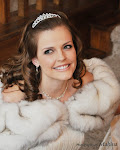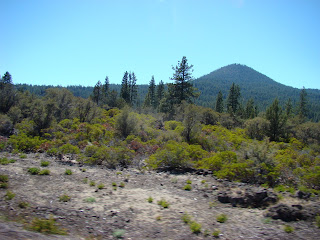Today, I opened my e-mail for the Week 3 of Elul study from the congregation. I read:
August 30, 2007
Dear Elisheva,
I recently had a discussion with a Rabbinic colleague about how our b'nai mitzvah students approach their mitzvah projects. We both agreed that most our children are very creative and industrious in the way that they go about researching and implementing their chosen acts of tseddakah. From recycling projects to working with animal rescue groups; volunteering in the school system and planting trees, our children do a wonderful job of finding ways to make a difference in our communities. And yet, we both expressed a sense of sadness and frustration that, increasingly, many of our b'nai mitzvah students are not choosing Jewish organizations that can benefit from these projects.
Shalom, Rabbi ______,
I am the parent of one of those kids who did a tzedakah project that did not directly serve the Jewish community for his Bar Mitzvah this past year. Perhaps I am feeling a little bit defensive here, but I wonder about separating the choices the kids make into “better” and “lesser” categories depending on who benefits from the services volunteered. Yes, I would like my son to be more involved in the Jewish community and at the same time, I also guided him toward a project that would extend beyond the “one-time deal” into something that he could and would continue to do after all of the hoop-la was over. In fact, for N., the commitment to animal protection projects increased after the Bar Mitzvah, because he began to have more time to devote to it. He is now our neighborhood ambassador for Sandia Mountain Bear Watch, writing and distributing information about how to co-exist with bears, rattle-snakes and mountain lions in our East Mountain community. After the Holy Days, he will begin a volunteer project with the Sandia Mountain I-40 Safe Passage Corridor, in which he will observe and count animals using the safe-passages that were part of the I-40 Tijeras Canyon reconstruction.
If our religion is to mean anything to us, it must extend from and be applied to the choices and decisions we make in our daily lives. As it happens, our daily lives are lived largely outside of the Jewish community...
(MLC) currently expresses a good deal of contempt for organized religion in general.... and is much more captivated by the unity of all life that she sees in her studies of biology and chemistry than she is by Torah and Mitzvot. She’d probably end up a pagan except that she also "eschews" (she uses that word—really!) the magical world view. Currently, she claims to be an atheist, (at least when she is not an agnostic). When she is present for Shabbat or Holy Day she participates by cooking and conversing, but refuses to sing the blessings. I live in fear that she might end up writing the next version of The God Delusion. I can see myself, like Woody Allen’s (movie) parents, wearing the nose-and-glasses disguise while I explain to reporters where I went wrong.
N., on the other hand, is far more receptive to and appreciates Jewish life as it is lived in our household, but he seems to desire a more personal (or maybe natural?) and less formal approach to his spirituality, and so really enjoys going to small group Torah study with (another rabbi in another congregation). He likes to pray at home, outside, and interrupts his worship to watch the hummingbirds, the coyotes and the deer that feed in our meadow. I sometimes wonder if N. is going to take off into the woods someday to find “the Spirit that moves through all things” in the natural world. He might end up being more like Starhawk with T’fillin than like Moses Mendelsohn.
As a parent, I have received little information or help in dealing with my children’s alternative approaches to religion and spirituality...(within Judaism). I suspect that the expression of spirituality is part of the make-up of the person (i.e. the heritability is high), so what does a mother do? I can make rules and boundaries, but I cannot force a specific kind of expression of religion or spirituality on another. Coercion tends to lead to forceful rejection, especially from independent thinkers like (my kids).
One concern I have about the current direction of Reform Judaism, is that there is much conformity of behavior but little philosophical justification for it. I think that a child—or rather a young person—like (one of mine) would have done better with the concepts of ethical monotheism and the prophetic voice that were taught in the more classical expression of Reform Judaism. The mix of lock-step adherence to certain ritual and custom (this is how we all must bow, dress, etc.) and rejection of other historic ritual and custom that seems willy-nilly, along with the materialistic values modeled in the current culture of Reform, does not appeal to (my kid's) idealism or ... desire for intellectual rigor. There was a heated discussion of this problem at our Passover table by the four Jewish young people there ( all in college)—two of whom were educated (here), one of whom was educated at a reform congregation in (another state), and one who received no Jewish education. The three who did receive a Reform education were very vocal about the materialism and “country club” atmosphere of their respective Reform congregations. Young people do notice when behavior does not model values preached! They are less tolerant of hypocrisy than are those of us who are older.
N., who does respect genuine Jewish values and ritual, would do better with religious instruction that is less formal and more connected with his life and passions. He needs teaching that starts where he is at, and role models that can appreciate, or at least attempt to understand, his child-like lack of sophistication in the social realm. He also needs to see values expressed in the every-day action of individuals, rather than the “do as I say, not as I do” approach, but for a different reason. People with Asperger Syndrome really do not understand the sophisticated social posturing that goes on among neurotypical people. For kids like N., values must be modeled in concrete ways—specifically in interactions between adults such as teachers and rabbis and him. It must be personal. Saying “we are going to spend quality time together” and then spending twenty minutes hurrying him through a hoop is sending a confusing message. So is the use of sarcasm in the religious school classroom—whether it is directed at him or other students. He notices and he does not understand and that hurts him. He wants to be part of things and sometimes his behavior is the result of trying too hard, or misunderstanding what a kid’s got to do to be accepted. He feels accepted among the people of Bear Watch, who appreciate his love of bears, mountain lions and snakes, as well as among the people of Children of the Earth Foundation, who share his love of the wilderness. So this is where his “action potential” has the best chance of taking root and thriving. This is where his life is lived and this is where his spirituality must be nurtured.
Anyway, maybe we should be happy that our kids want to repair the world a little bit, rather than consider those who choose ways that do not fit into the narrow range of options... of lesser value. Maybe we can see that they are ambassadors of the more universal values in Judaism to a world that does not know about them. Maybe we can include and learn from expressions of Judaism that do not fit the norm.
So, gentle readers, please chime in. Am I being overly-sensitive, maybe?





















































